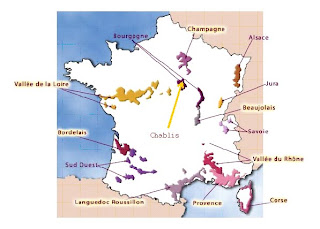 I've barely done any reviews this month -- it's just been crazy. Still, I've been writing. Here is a reprint of my latest post from BlackBook Magazine. Click the title or just read on!
I've barely done any reviews this month -- it's just been crazy. Still, I've been writing. Here is a reprint of my latest post from BlackBook Magazine. Click the title or just read on!New Year, New Wine: Sparkling Alternatives to Champagne
December 29, 2009
It’s New Year’s again, and whether you think it’s the ultimate party or the ultimate amateur night, you’re probably drinking a sparkling beverage. Notice that I didn’t say “Champagne.” You can only use the word Champagne for sparkling wine if it comes from the Champagne region of France, and is made in the serious and complicated old-school method. With the economy still in the tank, it may be better to venture beyond this esteemed region (and its $30+ price tags) and find some bottles that are unique and affordable, while being every bit as bubbly.

We all know the Spanish love to party. What you may not know is that they do it with bubbly just like everyone else. Spain learned how to make their version of sparkling wine, Cava, from the French. The only difference—it’s about one third the price of Champagne. These are probably the best values in bubbles and they are pure pleasure for your mouth. If you find a rose Cava, buy it immediately. For something light and fruity, report directly to the Italian section and try Prosecco. You can pick some decent stuff up for $10, and if you spend $15 or $20 the difference is huge. Regardless of price, all these bubblies are floral, light, and fruity. They may be less serious than Champagne, but they are still a great way to get your effervescence fix.
Wines from the U.S. are another option, but proceed with caution. Our sparkling wines tend to be overpriced and underwhelming. Some are just plonk. There is one producer in New Mexico, of all places, that makes some great-value sparkling wine. If you can get some from Washington State, you may have a real find. Still, my vote is to stick with Europe. You won’t regret it. No matter what you choose, be safe, and have a fabulous time toasting 2010 with your alternative bubbly.
Elizabeth Schneider is a Certified Specialist of Wine, Sommelier, and wine educator in Atlanta who teaches about wine in a normal, relatable way. For more of her musings please visit her blog Wine for Normal People http://winefornormalpeople.blogspot.com/ or her Twitter @Vine75.
Photo attribution: http://creativecommons.org/licenses/by/2.5/






































